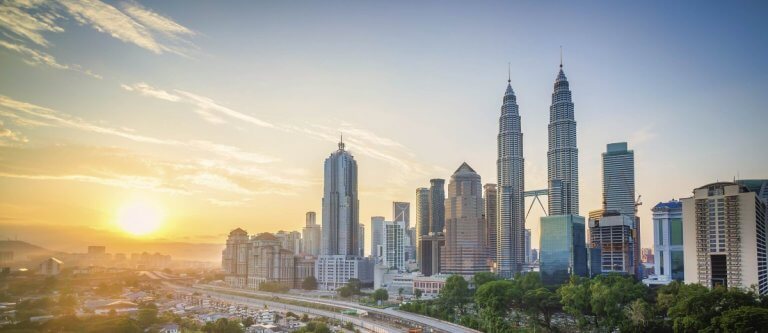
With the iconic US$1.6 billion Petronas Twin Towers looming above its gleaming skyline, it is easy to assume Malaysia’s Kuala Lumpur capital is an upscale city like its Asian neighbours Singapore or even Hong Kong.
But beyond its lavish facade is a city which does not need deeper wallets to live well in – rent is relatively low, with food and other living costs even lower. In its universities, the average tuition fees are US$2,900, a fraction when compared to cities such as Stockholm and New York.
The ability to live and study on the cheap helped bag KL, as the city is popularly known, the crown of the QS’ Most Affordable City for International Students for 2017.
“This recognition is testament to the efforts taken by the government and higher education institutions in making Malaysia a top education destination,” QS Intelligence Unit head of research Ben Sowter told The Star:
In its annual rankings, the British education company analysed 125 cities and responses from 18,000 international students worldwide.
We now take a look at how QS drew on their sources to show how cash plays out in this Asian metropolis:
1. Tuition fees

Tuition fees for a Bachelor of Arts International and Strategic Studies at University of Malaya is US$2,500 per year. Source: Wikimedia Commons.
Fees in KL start from as low as US$2,500 in the country’s top university, Universiti of Malaya. In comparison, the average fee in its neighbour’s National University of Singapore is nearly ten times more, at US$23,800, whereas for programs not subsidised by the government, starting fees are as much as US$29,050.
In addition, KL’s myriad of twinning programmes, branch campuses and joint degree programmes are competing to give students the most bang for their buck.
“For an international certification, students can choose to enroll in the six British, three Australian and one Chinese university which have branch campuses in Malaysia and enjoy at least 30 percent savings from lower tuition fee and lower cost of living,” Education Malaysia Global Services (EMGS) chief executive officer Mohd Yazid Abd Hamid told Yahoo!.
Such fees stand in stark comparison with the tuition rates rising alarmingly in favourite study destinations such as the United States and United Kingdom, where the cut in state funding is forcing schools to push costs higher.
2. Big Mac Index

You can have three burgers instead of one in KL. Source: Shutterstock.
The famous, light-hearted index by The Economist is a gauge used worldwide to estimate living costs based on the price of a McDonald’s hamburger.
By tracking the varying prices of the iconic fast food sandwich in each country, it provides a sort of barometer of affordability and even a “global standard” used in economic textbook and studies.
As at January 2017, a Big Mac in Malaysia is US$1.79, more than 60 percent cheaper than one in the US, priced at US$5.06.
Even in India, the next most affordable South Asian country, a Big Mac is nearly twice the price than one in KL, at US$2.49 a pop.
As The Economist‘s Asia Economics editor Simon Cox told The Edge Financial Daily last year, “Malaysia is offering a very good deal.”
3. IPad Index

Source: Pexels
Like the Big Mac Index, CommSec’s iPad index compares the Apple product in various countries. But unlike the “burgernomics” study, the price differences shown in the iPad Index mainly represents the transportation costs and taxes factored into the product in each market.
In 2016, Malaysia has among the lowest prices for an iPad Pro 12.9 inch, charging US$881.46, whereas countries such as Denmark and Chile charge more than US$1,040, with Brazil charging the most at US$2,242.12.
4. Cost of living

A view of Mongkok in Hong Kong. Pic: Shutterstock/umpo
Rounding up the affordability measures already tested above is this indicator based on the Mercer Cost of Living Rankings.
The rankings, which offer a good counterpoint to the indexes above, also serve to provide a fuller picture of costs.
While Asian countries such as Hong Kong (first), Singapore (fourth) and Tokyo (fifth) dominated the top five costliest cities to live in worldwide, KL was ranked No. 151 on the 2016 list, thanks to the country’s weakening currency.
Liked this? Then you’ll love these…
VIDEO: Top 5 cities for students by QS
Affluent East Asian cities are best student cities in Asia – rankings







